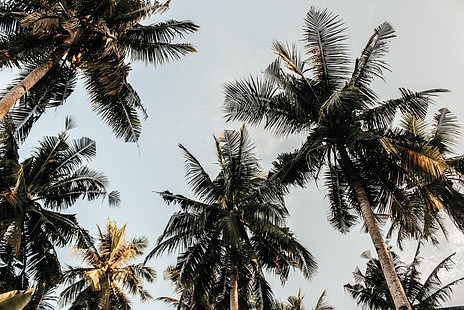
In tropical regions, generally referred to as jungles, everything thrives, including disease. Germs and parasites breed at an incredibly rapid rate. Here, nature provides water, food and materials for making shelters – all in relative abundance. Indigenous people have lived in jungles for millennia, hunting and gathering as needed. However, it will take the outsider time to adapt to the conditions and constant activity.
Native people wear little in the jungle, except for ornamental purposes, but the newcomer, unused to insects, parasites and unaccustomed to moving through dense jungle needs to keep as covered as possible. Clothing may become uncomfortably saturated with sweat but it is much better than being stung, scratched or bitten all over.
Do not remove your wet clothing until you stop for the day and then, with the average tropical humidity hovering in the 80 – 90% area, there is no need to hang it up to dry unless you’re doing so by means of fire or direct sunlight. Clothes consistently saturated by perspiration will eventually rot.
Except at high altitudes, tropical regions at both equatorial and subtropical regions will be characterized by high temperatures, heavy rainfall and oppressive humidity. At low altitudes, temperatures seldom vary more than 50° F (10°C) and is often 98°F (37°C). However, at altitudes over 5000 ft (500 m) ice often forms at night and the rain has a slightly cooling effect, but when it stops, the temperature soars.
Rainfall is heavy, often with thunder and lightning. Sudden rain beats on the tree canopy, turns trickles into torrents and causes rivers to rise rapidly and then, just as suddenly, is gone without warning. While not entirely tropical, I’m sure my readers from Florida can attest to the suddenness and frequency of these storms. For once second, it will be sunny and pleasant and in less than a minute a furious thunderstorm and torrential rains arrive. Then, just as suddenly, the sun is back, as though nothing happened.
Violent storms may occur, usually towards the end of the “summer” months. Hurricanes (Atlantic Ocean), Typhoons (Pacific Ocean) and Cyclones (Indian Ocean) develop over their respective seas and rush inland causing tidal waves and destruction.
When choosing a camp site in these types of regions, make sure you are above any potential flooding. To assist with this decision, It’s helpful to know what the current season is. Prevailing winds determine the frequency of the rains between winter and summer seasons – with the winter being relatively dry (rain once a day) vs the summer monsoon (continual rain).
For example, in south-east Asia, winds from the Indian ocean bring the monsoons, but blowing winds from the landmass of China bring the dry season. Monsoon season is likely to create fewer camp site possibilities in comparison to the dry season.
Tropical days and nights are of equal length. Darkness falls quickly and daybreak is just as rapid.